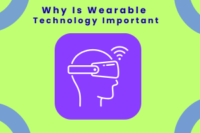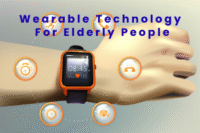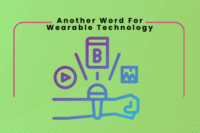What is Wearable Technology Primarily Developed For?
Published: 02 Feb 2025
Wearable technology is like a smartphone, but you don’t have to hold it. Smartphones help with communication, tracking, and entertainment, but you need to check them often. Wearable devices, like smartwatches and fitness bands, work all the time without much effort. They track health, improve safety, and make life easier. The key difference? Wearables are hands-free and work in the background. This makes them useful in ways that smartphones cannot match. So, what is wearable technology mainly developed for?
Primary Purposes of Wearable Technology
Wearable technology is primarily developed for the following tasks:
a) Health and Fitness Monitoring
Wearable devices help track health and fitness. They monitor heart rate, steps, and calories to keep users active and informed. These devices provide real-time data for better health management.
- Heart rate tracking – Helps monitor fitness levels and heart health.
- Step counting – Tracks daily movement to encourage an active lifestyle.
- Calorie tracking – Estimates energy burned during activities.
Examples: Fitbit, Apple Watch.
b) Medical and Healthcare Uses
Wearable devices help in healthcare by tracking health conditions and providing real-time data. They assist patients and doctors in managing chronic diseases and overall health.
- Monitoring chronic conditions – Devices track issues like diabetes and heart health.
- Remote patient monitoring – Doctors can check patients’ health without in-person visits.
- Health alerts – Wearables send warnings for abnormal heart rate or sugar levels.
Examples: Continuous glucose monitors, ECG wearables.
c) Enhancing Communication and Connectivity
Smartwatches and AR/VR devices make staying connected easier than ever. They help you manage calls, notifications, and experiences right from your wrist or through immersive technology.
- Smartwatches like the Apple Watch allow you to answer calls and view notifications directly.
- AR/VR devices like the Meta Quest offer immersive, interactive experiences for gaming or work.
- These devices keep you connected without needing to pull out your phone.
d) Workplace Productivity and Safety
Wearable devices help workers stay productive and safe, allowing hands-free access to important data. Smart helmets and exoskeletons improve physical tasks and safety in demanding environments.
- Microsoft HoloLens lets workers view data without using their hands, boosting productivity.
- Ekso Bionics’ exoskeletons assist workers with heavy lifting, reducing strain and injury.
- Smart helmets provide real-time information to keep workers safe in hazardous conditions.
e) Sports and Performance Tracking
Wearables help athletes track their performance and improve their training. Smart clothing and devices monitor body movements to provide insights and enhance results.
- Whoop Strap tracks heart rate, sleep, and recovery to optimize athletic performance.
- Smart shoes measure running efficiency and provide feedback to improve form.
- These wearables help athletes monitor progress and prevent overtraining.
f) Entertainment and Lifestyle Enhancement
AR/VR devices and smart jewelry are transforming how we enjoy gaming, media, and fashion. They offer immersive experiences and stylish ways to stay connected.
- Oculus VR provides a fully immersive gaming and media experience.
- Ringly smart rings combine fashion with tech, offering notifications in a stylish design.
- These devices enhance daily life with entertainment and convenience.
Conclusion
So guys, in this article, we’ve covered what wearable technology is primarily developed for in detail. Personally, I think wearables are a great investment for anyone looking to improve their health, safety, or convenience. Whether it’s a smart watch or a fitness tracker, these devices offer real benefits. Take the first step now and find the wearable that suits your lifestyle!
FAQs
Wearable technology started in the 1960s with experiments like the “wearable computer.” It grew in the 1980s with devices like heart rate monitors and fitness trackers. The real boom happened in the 2000s when smartwatches and fitness bands became popular.
The first wearable technology was created in the 1960s by Edward Thorp, who developed a “wearable computer” to help him count cards in blackjack. Later, in the 1980s, devices like heart rate monitors and fitness trackers began to pave the way for modern wearables.

- Be Respectful
- Stay Relevant
- Stay Positive
- True Feedback
- Encourage Discussion
- Avoid Spamming
- No Fake News
- Don't Copy-Paste
- No Personal Attacks

- Be Respectful
- Stay Relevant
- Stay Positive
- True Feedback
- Encourage Discussion
- Avoid Spamming
- No Fake News
- Don't Copy-Paste
- No Personal Attacks



